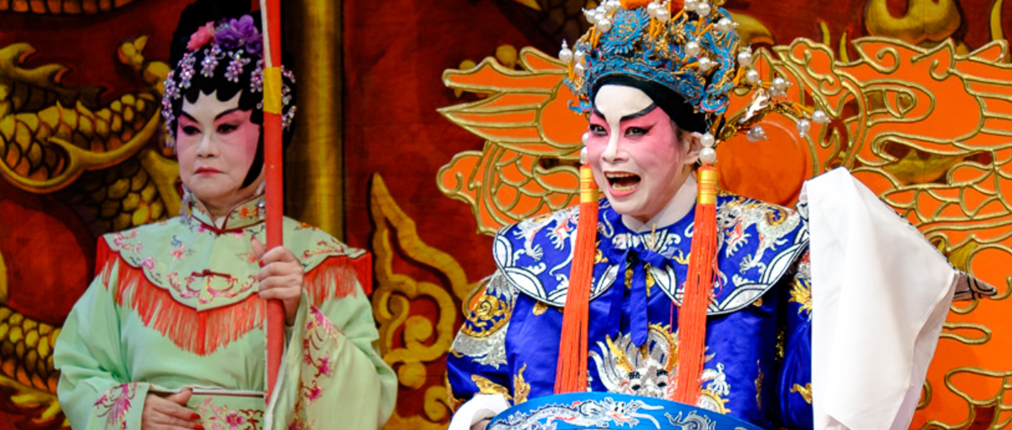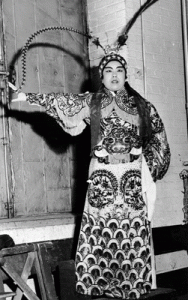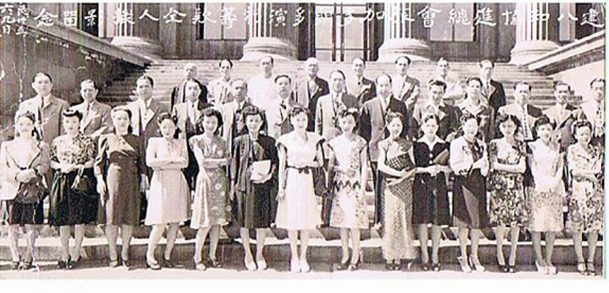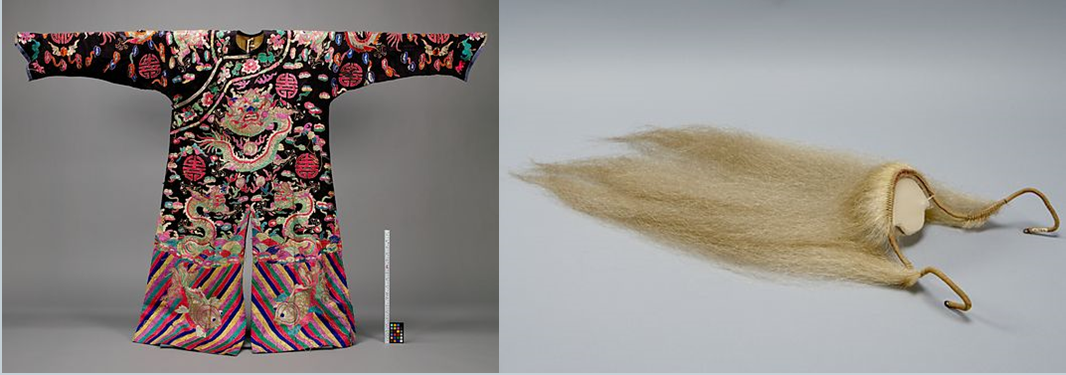The Cantonese Opera Star
History of the Opera
The Cantonese Opera is an art form that is centuries old. Founded in Guangdong, China, it is often referred to as the Guangdong Drama. The origins of the opera date back to the days of the Ming Dynasty, and is often a mix of different operatic styles. The costumes were made to imitate the styles of the Ming Dynasty but, there was no official uniform. The costumes often changed as the opera moved from city to city, to blend in with their regional styles. The opera became significant for telling stories and teaching lessons through music and song.
Image Source: Vancouver Cantonese Opera
The Opera Star
This is Tuey Ping Lee-Hum, the opera star. She was a Cantonese opera performer in Hong Kong, who came to Canada with her Opera troupe in order to raise awareness and support for the war effort in China against Imperial Japan. The opera has a significant role in Canada, specifically Vancouver, Toronto and Montreal, for bringing people together. Through the musical comforts of the opera, those who had migrated from China to Canada, could enjoy and revel in a little piece of home, while still supporting the war effort.
Image Source: Heritage Toronto
Jin Wah Sing
Tuey arrived in Vancouver in 1936, and joined the Jin Wah Sing opera troupe sponsored by the Chinese Freemasons; an organizational group that helped Chinese immigrants find a sense of community. The idea behind the troupe, was to raise war relief efforts, but the troupe ended up having so much success on its own, that they continued for years after the war. The troupe went to New York City, Boston and Detroit to perform after the war, and were welcomed by the Chinese community in New York, for rallying support against Imperial Japan.
Jin Wah Sing meaning, ‘to raise the Chinese voice’ is what the troupe continued to do. This photo is of the troupe in Toronto after the Second World War, before leaving for the United States. Tuey is the third from the left in the front row.
Image Source: Multicultural History Society of Ontario
The Star and the Opera
This is Tuey playing one of her favourite roles as a general. Around the 1920’s the opera changed, where women could play male roles and men could play female roles. “She liked to be in charge”, says Doug, Tuey’s son, who in a recorded interview, remembers her always playing lead male roles. Generals and soldiers leading against invaders, is often who she played, because she got to have all the power: “She reveled in it.” Many of the costumes were brought from Hong Kong to use, Doug says, but a lot of them were also hand made.
Doug’s father was also a tailor, so he could make any costume she needed. Her costumes hold a sentimental value to Doug, as many were hand stitched. Doug donated a few costumes to the Toronto District School Board Archives, and the rest to her opera troupe after she passed away in 1994. Doug also described her beard and black and white make up, which he says, made her look fierce. Her costumes also contained feathers, which he thinks may have represented a ranking of generals.
Image Source: Heritage Ontario
Costumes
This robe and beard, from the Museum of Anthropology at the University of British Columbia, are similar to the costume pieces that Tuey and her fellow performers would have worn. The robe, made in Canton, would have been used to represent a military gentleman or high ranking official. The beard, also made in Canton anywhere from 1910-1940, uses a wire frame to hook over the ears and sit over the mouth of the performer, and was often used to play the character of an old man
These costume pieces are not the same, but are similar to the pieces Tuey would have worn when playing a general. Both items, are just two of that many that have been acquired by the MOA UBC, that were used by the Jin Wah Sing, and other troupes from China and Canada.
Image Source: Museum of Anthropology, University of British Columbia
Work Cited
- Bushey, Jessica. Muhn Wuh (Cantonese Opera Beard). N.d. Museum of Anthropology University of B.C, British Columbia. Museum of Anthropology University of British Columbia. Web. 2. Apr. 2015.
- Bushey, Jessica. Iuhng Pouh (Cantonese Opera Robe). 1910. Museum of Anthropology University of B.C, British Columbia. Museum of Anthropology University of British Columbia. Web. 2. Apr. 2015.
- Cheng, Rose. N.d. Vancouver. Vancouver Cantonese Opera. Web. 2. Apr. 2015.
- Ching, Steve. Glamour of Cantonese Opera: An Introduction. Run Run Shaw Library, City University of Hong Kong. N.d. Web. 23. Feb. 2015.
- Hum, Doug. Group Portrait of the Jin Hong Sing Opera Troupe, Toronto. N.d. Multicultural History Society of Ontario, Toronto. Chinese Canadian Women. Web. 20. Mar. 2015.
- Hum, Doug. Interviewed by Julia Lum. “Interview With Doug Hum, Part 1 of 1.” Chinese Canadian Women. Multicultural History Society of Ontario. 3. June. 2010. Web. 23. Mar. 2015.
- Hum, Doug. Tuey Ping Lee-Hum On Stage. 1938. Multicultural History Society of Ontario, Toronto. Chinese Canadian Women. Web. 20. Mar. 2015.
- Hum, Doug. Tuey Ping Lee-Hum Performing in Costume. N.d. Multicultural History Society of Ontario, Toronto. Chinese Canadian Women. Web. 20. Mar. 2015.
- Johnson, Elizabeth Lominska. “Cantonese Opera in its Canadian Context: The Contemporary Validity of an Old Tradition.” Theatre Research in Canada. 17.1 (1996). Web. 20. Mar. 2015.
- Kaitlin. The Cantonese Opera Star. Heritage Toronto. 4. Jan. 2013. Web. 23. Feb. 2015.
- Ng, Wing Chung. The Chinese in Vancouver, 1945-80:The Pursuit of Identity and Power. Vancouver: UBC Press, 1999. Web. 20. Mar. 2015.





